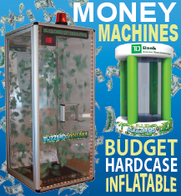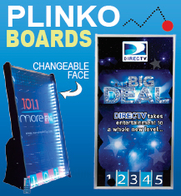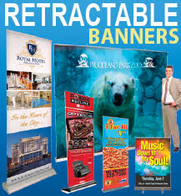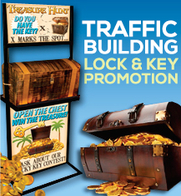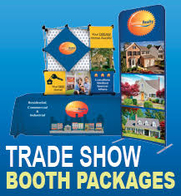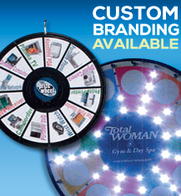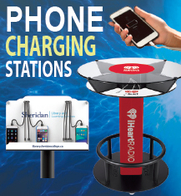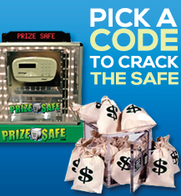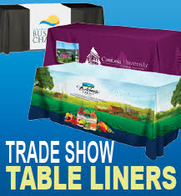 Hello Class! In this lesson we will cover Best Practices you should consider implementing into your trade show program. “Best Practices” is one of those buzz words (OK, two words) that mean a lot of different things to different people. It usually is a collection of knowledge and rules as to how certain things should be done to ensure a certain level of quality, avoid oversights and ensure certain results.
Hello Class! In this lesson we will cover Best Practices you should consider implementing into your trade show program. “Best Practices” is one of those buzz words (OK, two words) that mean a lot of different things to different people. It usually is a collection of knowledge and rules as to how certain things should be done to ensure a certain level of quality, avoid oversights and ensure certain results.
In our case, trade show best practices are a set of rules and guidelines that simplify the tradeshow planning process, make sure that we don’t miss anything important and speed up the exhibiting process.
During my career I have seen a number of different implementations, and the level of detail you decide to have depends on many factors, but the size of your organization and the number of shows you participate in are usually key. If you work for a large company, detailed best practices are particularly important since a much larger number of people are involved in planning and executing your shows. If you have multiple event planners organizing shows at the same time, you want to avoid everyone coming up with their own sets of rules, vendors and programs.
Examples:
To illustrate my point, let me give you two examples you would want to see covered in your best practices guide:
1. Process for Graphic Design and Printing of Collateral
Now why would you need to define that? First of all you want to avoid everyone going out creating their own material and risk inaccuracies in content and a non-consistent look and feel. You also want a uniform acquisition process to save cost.
Here are some sample rules:
- The latest collateral files can be accessed at <location>, usually a file server or collaboration site such as Microsoft Sharepoint.
- If you need new material created, make sure it follows the design guide located at <location> and have it approved by <name or job title or department> and sent for printing at least <number> days before the show. Make sure to have at least <number> vendors from the approved vendor list provide a quote before awarding the contract.
Of course there can be much more detail for a single topic like this. You may spell out conditions before new material can be considered, or point towards a collaboration site to make sure nobody else is working on the same or similar material etc.
2. Process for Promotional Materials (give-aways)
- Existing inventory of promotional items can be found at <location>.
• New promotional items may only be ordered after providing sufficient documentation about the purpose of the items, the intended recipients and cost of items. Any new items have to be approved by <name or title or department> and have to follow the guidelines located at <location>.
• Approved new orders may be placed after getting at least <number> of quotes from the approved vendors, a list can be found at <location>.
• Use of existing promotional items requires approval by <name or title or department>.
Key Considerations
You have to decide on how many rules you need and how detailed the rules have to be, usually based on your audience. A good way to start is to make a list of all activities that are part of exhibiting, pre-show, at show and post show. Also make a list of vendors and people (or job functions) involved in that process.
Keep your written guidelines as easy to read as possible using few words and bullet points instead. But make sure you have enough detail that the respective responsible party understands what to do.
I suggest analyzing your best practices frequently and updating them as necessary. Collecting feedback on the effectiveness is an important part; and always encourage suggestions for improvement.
Key Areas for Best Practices
Below is a generic list to help you get started. Your company will have items that need to be added and some that won’t apply.
- Targeted shows
- Goals and objectives
- Per show budget criteria
- Guidelines for marketing collateral, promotional items, public relations and display
- Display Guidelines: Graphics, messaging, handling, shipping, booth layout, approved display types, general pricing and preferred vendors
- Approved graphic files and where to access (for display, collateral, etc.
- Forms to fill in (for show requests, materials, displays, etc.)
- How to get approval for XYZ
- Booth staff: Procedures, uniform, goals, training meetings, incentives, travel and expenses
- Lead process and follow up
- Shipping and material handling procedures: pre-show, at show and post show
- Measure and report on ROI and ROO post-show for each show
Make Your “Trade Show Best Practices” Program Successful
- Involve senior management
- Market benefits of the “trade show best practices” guidelines internally (via email, intranet, in meetings, company webcast, company newsletter or company E-zine etc.)
- Ask for feedback and make changes to the guidelines as needed.
Homework
Start thinking about how best practices guidelines could be implemented within your company. Create an outline and discuss these guidelines and benefits with sales/marketing department heads or upper management. Then fill in each area with details of the process; keep the details brief and concise. When the first draft is complete, send a copy to the sales/marketing department heads for feedback. Once the guidelines are completed, hold a meeting with the appropriate departments to unveil the “trade show best practices” guidelines!
Jonathan Edelman provides helpful advice about trade show strategies. With years of experience in the trenches, he is an expert on booth displays, follow up techniques, and using trade show marketing strategies to boost revenue.










